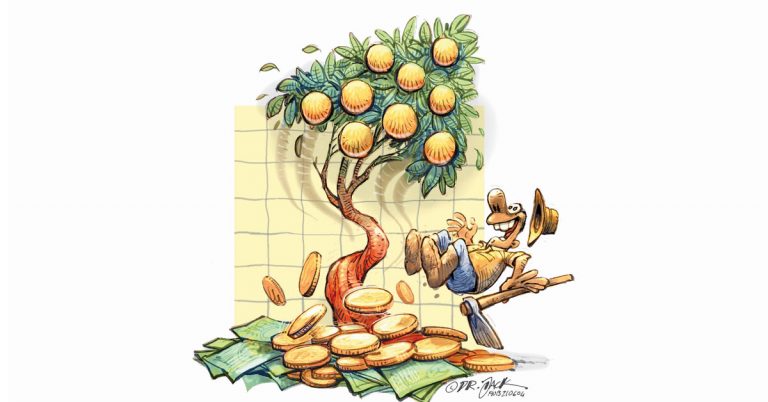
Economists have long recognised the importance of investing in agriculture, as the sector is potentially an engine for growth, employment creation and poverty reduction.
Country-specific studies, for Ethiopia and Ghana, for example, have also emphasised how the provision of public goods and services in agriculture has a substantial impact both on agricultural productivity and rural welfare.
Public investment in agriculture is important for two key reasons. First, evidence has shown that doing so is particularly effective at reducing poverty. Second, it is fundamental to addressing market failures, such as a lack of infrastructure and research and development, which are major limitations to the sector’s growth.
In countries with limited resources where agriculture is critical to the economy, it is particularly important that sufficient resources be allocated to the sector. In African countries, increasing the volume of public spending on agriculture is a crucial way of boosting productivity and reducing poverty.
Evidence from successful agricultural transformations in 12 Asian economies found that during their periods of high agricultural growth (‘Green Revolution’), they devoted approximately 10% of total public spending to agriculture.
Trends in expenditure
Analysis of a number of sub-Saharan African countries has found that total government spending on food and agriculture between 2004 and 2018 averaged around 6%, below the 10% Maputo Declaration target.
Public expenditure on food and agriculture increased rapidly (by approximately 13% on average) from 2004 to 2018, with eight out of the 13 countries studied experiencing double-digit growth in their food and agriculture budgets.
However, when considering inflation, currency depreciation and demographic factors, this growth was much more modest, at approximately 5% on average.
In Ghana and Tanzania, expenditure on agriculture (in real terms) even experienced negative growth.
With rapid population growth and national economies experiencing high inflation and rapid currency depreciation, which makes imported inputs, such as fertilisers, more expensive, more resources are needed to achieve sustained growth in real expenditure on food and agriculture per capita.
Despite increases in nominal budgets, the average share of actual expenditure allocated to food and agriculture during the period under study was less than 10% for the vast majority of countries.
Budget execution
Execution rates of public expenditure (the percentage of budgeted funds that are spent) have long been an area of concern, especially for capital investments such as infrastructure.
Some studies have revealed that addressing the low execution rates on general infrastructure expenditure in Africa could increase spending by an average of 50% without additional budgeted resources.
These low execution rates are often attributed to poor planning, deficiencies in project preparation, and delays in procurement. One of the reasons for low spending in agriculture is that the money is disbursed too slowly and is thus left unspent.
The average execution rate for expenditure on food and agriculture was 79% over the study period, which means that, on average, 21% of the budget was left unspent across countries, thus undermining transformative investments.
This is due to an over-reliance on donor-funded projects, delays in the release of funds, a misalignment between the release of funds and the seasonal nature of the agriculture sector, and a number of projects that proved difficult to plan.
Donor funding is also a major contributor to the agriculture sector. On average, 36% of African budgets in agriculture are made up of donor contributions, which often have a larger share of unspent project funds. The difference between national and donor execution rates can be explained by at least three factors.
First, salaries, wages and other recurrent expenditures are typically more predictable and are usually financed by domestic sources rather than donor-funded expenditure. The latter mostly funds capital expenditures, which are more difficult to implement and more exposed to abrupt changes.
Second, investment projects (funded mainly by donors) may require legislative approval, even when resources have been budgeted. Procurement plans may not be drafted before budgets are available, delaying the implementation of projects and undermining execution of expenditure by donors.
Third, donor-funded programmes tend to be large and require governments to comply with specific project-management rules, which add a layer of complexity to their implementation.
Solutions
A number of solutions suggest themselves. First, increasing the proximity of policymakers to their beneficiaries through decentralisation could lead to a better alignment of local policies with stakeholder needs, especially amongst the poorest people, as well as reducing corruption and strengthening accountability among local authorities.
Second, resources should be geared towards areas with high levels of poverty and some agricultural potential, where additional expenditure may have a greater impact on reducing poverty and increasing agricultural performance, rather than targeting areas with high agricultural potential over those with high levels of poverty.
The focus needs to shift to how budgets are spent. Better monitoring of public expenditure
is more imperative than ever as countries grapple with the ongoing COVID-19 pandemic and its effects on food and agriculture.
It is important to clear bottlenecks created by slow access to funds, inaccurate forecasts of revenue, and complicated procedures for project implementation, as all of these can retard a country’s agricultural development. These problems can be mitigated by regularly monitoring public expenditure and improving local capacity to manage and execute funds.
The views expressed in our weekly opinion piece do not necessarily reflect those of Farmer’s Weekly.
This article is an edited excerpt from report titled ‘Public expenditure on food and agriculture in sub-Saharan Africa: trends, challenges and priorities’, published by the Food and Agriculture Organization of the United Nations.









